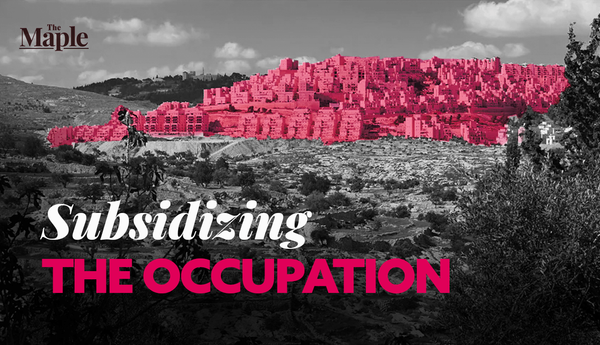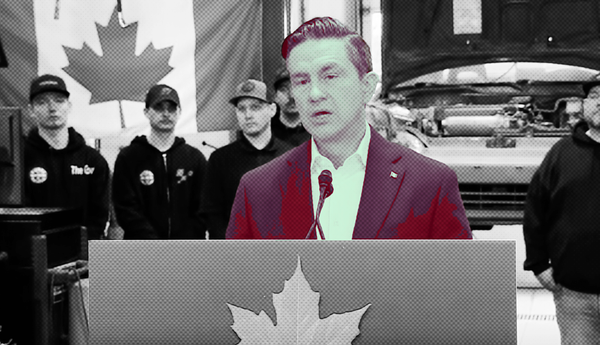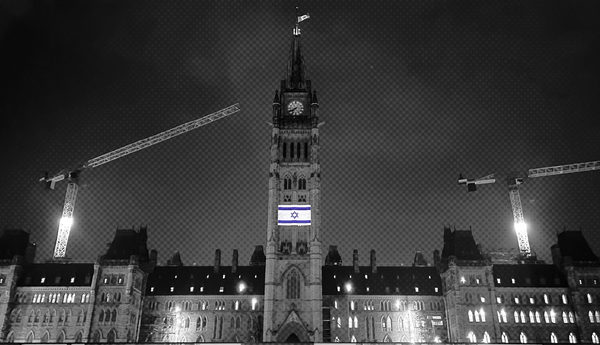Vancouver Police Department (VPD) data indicates that seizures of drugs by officers in quantities at or below 2.5 grams increased by 34 per cent in the six months after British Columbia implemented its “decriminalization” model, when compared with the six months prior.
Amid a worsening drug toxicity crisis that has killed over 13,000 people since April 2016, the B.C. government implemented a “decriminalization” framework for certain drugs in quantities at or under 2.5 grams on Jan. 31, 2023, in coordination with the federal government. The federal government granted the province an exemption to the Controlled Drugs and Substances Act (CDSA). The model has a notable number of exceptions and disclaimers.
The Maple obtained the VPD data on drug seizures made before and after decriminalization through an access to information request.
In an email, B.C.’s Ministry of Mental Health and Addictions (MMHA) sent totals that showed a decrease in small drug seizures by police across the province. But the government only included seizures under 2.5 grams linked to interactions in which police deemed simple possession to be the “most serious offence.”
While B.C.’s decriminalization model empowers police to continue to lay possession charges in limited situations – for instance, all drug possession in playgrounds or schools remains illegal – the use of such charges became more restricted.
But police seize drugs and criminalize users under many circumstances where possession is not the primary issue.
And in Vancouver, the province’s most populous city, analysis by The Maple shows that small drug seizures have increased under the decriminalization pilot project, per police reporting. Exactly why this is the case remains unclear.
In response to questions, MMHA was unable to provide information about total drug seizures that occur regardless of offence or charge, nor explain whether they were evaluating all types of drug seizures provincially.
The VPD dataset obtained by The Maple shows that officers conducted 665 seizures of quantities at or under 2.5 grams in the six months leading up to decriminalization, and 894 seizures at or under 2.5 grams in the six-month period after decriminalization.
In total, VPD reported seizing drugs in all quantities over 3,000 times in the total 12 month period. The data does not show how many of these seizures were associated with an offence or charge.
When asked about these seizures, VPD media relations officer Steve Addison wrote that multiple records can be linked to one “incident,” so cannot be used to “accurately analyze drug trends.” In other words, more than one reported seizure might be linked to one police stop.
But this is true for the data provided both before and after decriminalization, and does not explain VPD’s increase in small drug seizures overall.
B.C.’s decriminalization model grants police a wider scope by giving them a healthcare referral role and allocates health resources and funding to policing functions. The officer training created by the B.C. government for the decriminalization model details other legal tools that police can use to criminalize drug users, such as public intoxication and nuisance bylaws.
Minor seizures without charges have accounted for thousands of VPD seizures dating back to at least 2017, according to VPD data previously reported on by The Tyee.
It is also unclear whether the MMHA will account for civil forfeiture cases, a controversial police practice that permits officers to take someone’s belongings without a charge, and is weaponized disproportionately against people in Vancouver’s Downtown Eastside, a neighbourhood characterized both by poverty and informal networks of care between residents.
There are also anecdotal reports of VPD seizing drugs when they conduct displacements of people living outside, a practice commonly referred to as “street sweeps.”
Notably, no available data captures extra-legal seizures or seizures that simply aren’t recorded unless they are reported by police.
Out of the 3,197 seizures recorded in the VPD data, 120 were excluded from The Maple’s analysis due to incomplete information or nonstandard measurements.
The 2.5 gram threshold was decried by many groups during the decriminalization model consultation process as ineffective, potentially harmful and based on police preferences. It ignored established patterns of drug use and procurement as well as guidance from drug users.
Last month, 28 B.C.-based groups, including Vancouver District Labour Council, the Vancouver Area Network of Drug Users and Prisoner’s Legal Services, endorsed a 28-gram threshold (or eliminating the threshold altogether).
Government correspondence shows that in 2021 the B.C. Association of Police Chiefs (BCAPC) opposed the decriminalization of personal possession up to 4.5 grams. Police had originally proposed a 1 gram threshold, but eventually supported 2.5 grams.
Prior to decriminalization, an internal policy permitted VPD officers to use individual discretion to decide whether or not they wanted to seek charges if they encountered someone in possession of drugs for personal use.
VPD reduced use of possession charges years ago under this policy. By 2019, VPD recommended possession charges 36 times, per documents obtained in a previous access to information request, representing a major decrease from the years prior.
For this reason, the 2.5 gram threshold has been described by some within Vancouver as a “legal limit” that risks expanding the criminalization of drug users compared to the previous policy employed by VPD that had no clear threshold.
Seizures Cause Wide-Ranging Harms
Seizures of small amounts of drugs are part of a broader issue of police harassment against drug users.
A survey from 2022 to 2023 shows that nearly one-third of British Columbians who use drugs reported that their harm-reduction supplies, such as sterile syringes and pipes, were seized by police. These items are typically distributed by publicly funded health services.
Vancouver-based physician Tharuna Abbu, who practices in the Downtown Eastside, is among those concerned about drug seizures.
“If you buy from a regular, known source and suddenly have these drugs seized, it puts you at risk of seeking a new supply from an unknown source […] conceivably, increasing the risk of overdose,” Abbu told The Maple.
Last year, a landmark study established a clear link between police drug seizures and increases of fatal and non-fatal overdoses in the days and weeks following seizures in one U.S. city. Disruptions to known and trusted drug-supply networks among people who use drugs can also mean that those people turn to unknown sources.
Seizing small amounts of personal drug supply can throw an individual into debilitating withdrawal, especially if they regularly use opioids.
Research shows that more than 60 per cent of people in Vancouver who experienced a drug seizure went on to obtain new drugs immediately. These seizures can also cause financial impacts, compelling people to gain income in order to procure replacement drugs. This can, in turn, contribute to housing precarity and exposure to violence.
Seizures of various opioids in amounts at or below 2.5 grams also increased substantially in the six months following decriminalization when compared with the six months before – a troubling fact given the specific risks that come with opioid withdrawal and overdose.
Decrease In Possession Charges
One of the rationales for decriminalization is that it could reduce deaths caused by toxic drug supply by decreasing incarceration rates. People who leave provincial prisons in B.C. are 56 times more likely to die by overdose within two weeks than the general population.
The three main drug offences listed under the CDSA are simple possession, possession for the purposes of trafficking, and trafficking.
In a September 2023 snapshot published by the B.C. government, the province claimed that possession charges were set to decrease by 76 per cent in the first year of decriminalization.
But the MMHA is selective in which statistics they release publicly. Similar to the issue of seizures, the reduction of possession charges only accounts for charges where possession was the “most serious offence,” thereby excluding incidents where possession was included as a lesser charge.
The MMHA told The Maple that province-wide charges of trafficking – a more serious offence than possession – have not increased significantly under the decriminalization pilot.
The ministry didn’t note whether there were changes in the number of offences for possession for the purposes of trafficking. However, it may be the case that VPD is shifting toward the use of other drug charges in their enforcement strategy, which might explain the increase – a risk flagged by researchers last year.
The MMHA also stated that their evaluation team is not monitoring changes or increases in the other charges and legal tools highlighted in the decriminalization police training. They explained that this is because these other charges are “highly contingent on context,” but did not explain why this context would be too difficult to capture through methods that are not police-led.
While the province-wide reduction in possession charges is a positive development, changes in the overall legal environment and the criminalization of drug users remain unclear.
Undermining Safer Supply
In the six months after decriminalization was implemented, drugs that police described as “prescriptions” made up 14.8 per cent of VPD seizures at or under 2.5 grams. These include dexedrine, as well as morphine and hydromorphone – medications included as part of prescribed “safer supply” in B.C.
The VPD reports do not clearly define which seizures involved “prescriptions.” In some cases, they may be confiscating people’s substances prescribed by a doctor, while in others they may be taking some of what little predictable supply exists in the unregulated market. These are regulated substances that rarely cause overdose.
The seizure of prescription medications by police also undermines the efforts of frontline health workers to increase access to a safer drug supply through prescriptions and by connecting people to health services. Some U.S. jurisdictions have decriminalized buprenorphine possession regardless of prescription for that reason.
Ongoing police seizures of medications risk prolonging a situation where one arm of the government pays clinicians to prescribe medications, while another arm pays police to take them away.
Police seizures of small amounts of drugs impact people who are in outdoor spaces the most, including people without housing. Indigenous, racialized and lower income communities, already subject to selective enforcement, have sounded the alarm about these risks being further extended as a result of the B.C. NDP’s Bill 34.
The “Restricting Public Consumption of Illegal Substances Act” gives police broader powers. It includes provisions for police to arrest people without a warrant if an “officer has reasonable grounds to believe that a person is consuming an illegal substance” in a public area. In these situations, the legislation empowers police to seize any drugs, including in amounts below 2.5 grams.
The legislation was successfully challenged in December 2023 by the Harm Reduction Nurses Association (HRNA), with support from Pivot Legal and Canadian Drug Policy Coalition lawyers, and is currently paused while awaiting a Charter challenge.
The bill has also been publicly opposed by many other groups, including the Canadian Mental Health Association and its B.C. division, the Union of B.C. Indian Chiefs, the B.C. Association of Social Workers, the Surrey Union of Drug Users (formerly SNUDU), B.C. Green Party Leader Sonia Furstenau and MLA Adam Olsen, the Vancouver Area Network of Drug Users, the Western Aboriginal Harm Reduction Society, the B.C. Association of People on Methadone, Care Not Cops, and Crackdown.
In correspondence with The Maple, the B.C. Civil Liberties Association and the Eastside Illicit Drinkers Group for Education also stated their opposition to Bill 34.
Upon granting an injunction, Chief Judge Christopher Hinkson listed drug seizures, involuntary displacement and an increased frequency of interacting with police officers as possible causes of “irreparable harm.”
“Bill 34 only serves to undermine our work,” Bilal Bagha, a family physician who practices in Victoria, B.C., told The Maple. “Health workers […] are working hard to address the health effects caused by centuries of colonial policy.”
“Many of my patients are Indigenous people who use drugs, who are already vastly over-represented in drug poisoning deaths, housing insecurity and carceral violence,” he added.
B.C. Premier David Eby has committed to appealing the injunction.
Bagha said he is “appalled” at the B.C. NDP for pursuing Bill 34, and commended his “nursing colleagues at HRNA for taking a stand […] I fully support their Charter case to protect our patients and community members against further violence, policing, displacement and death.”
“This bill attempts to erase drug users from virtually all public space,” said Abbu. “It violently dismisses that people who use drugs are a part of our communities.”
In January, B.C.’s Chief Coroner Lisa Lapointe announced that 2,511 people had been killed by the toxic drug supply in 2023, making it the worst year on record for toxic drug deaths.
The VPD data underscores that drug enforcement activity in Vancouver continues to target street-level drug trading, sharing and selling even in the context of B.C.’s decriminalization model. The 2.5 gram threshold has seen resources flow to police, bureaucracy and intensive research monitoring.
These continued small drug seizures highlight how police can adapt and turn to other legal means to sustain the role of law enforcement in the lives of people who use drugs, even in the context of decriminalization, and that measures that expand their discretion risk deepening the harms of low-level drug enforcement.
And in November 2023, the B.C. NDP outright rejected any non-medicalized drug supply regulation. The combined links between police drug seizures and overdose deaths, with an absence of access to a predictable drug supply, suggests the B.C. NDP is content to permit the high rate of people dying from the unregulated supply to continue.
Thank you to Sarah Mangle for support with data validation and technical support. The authors alone are responsible for the analysis and interpretation. The full dataset can be accessed here.
Tyson Singh ਟਾਈਸਨ ਸਿੰਘ is a PhD candidate in Simon Fraser University’s Faculty of Health Sciences, and outreach-based social worker in Vancouver’s DTES.
Liam Michaud is a PhD candidate in Socio-Legal Studies at York University and has worked in harm reduction outreach off and on for 15 years.






